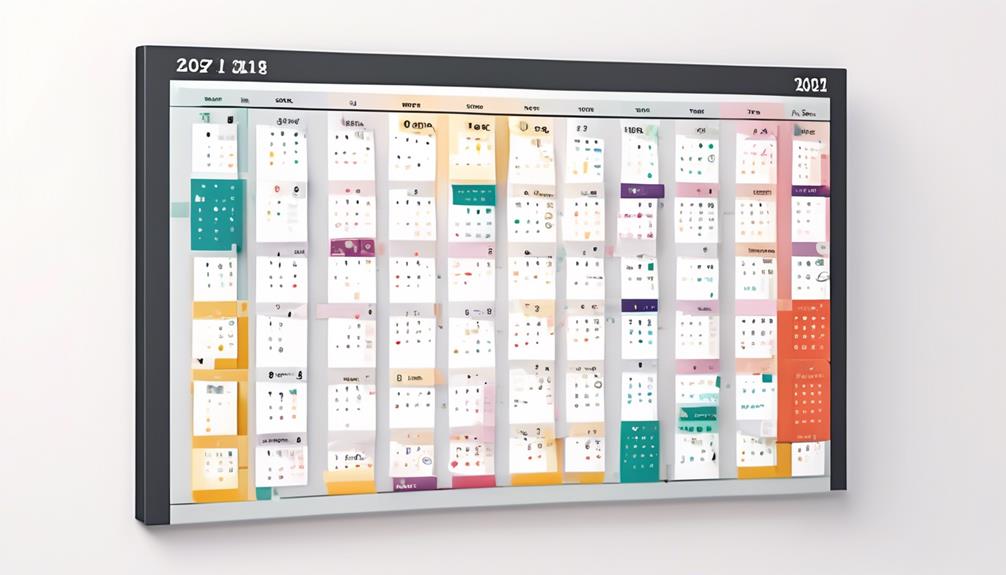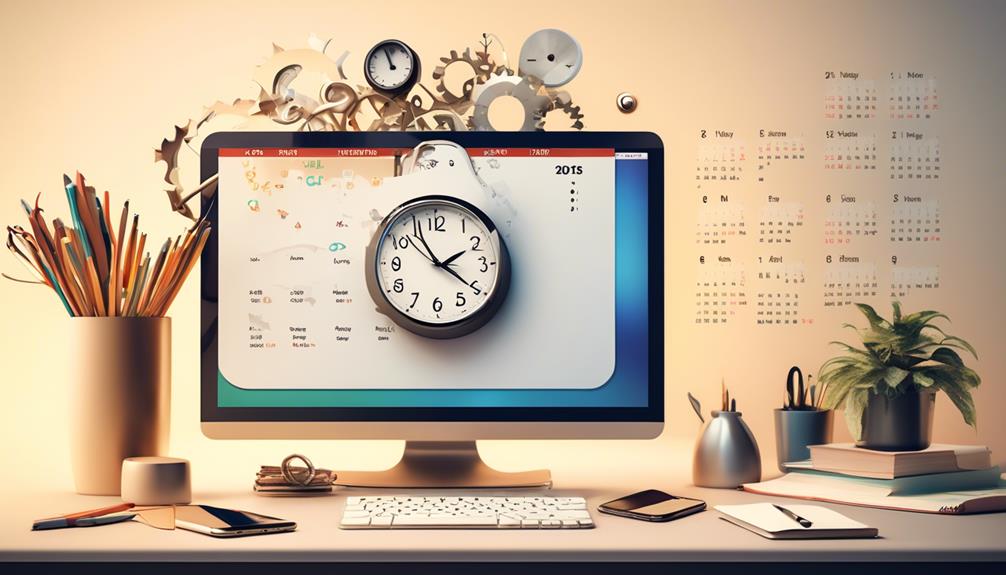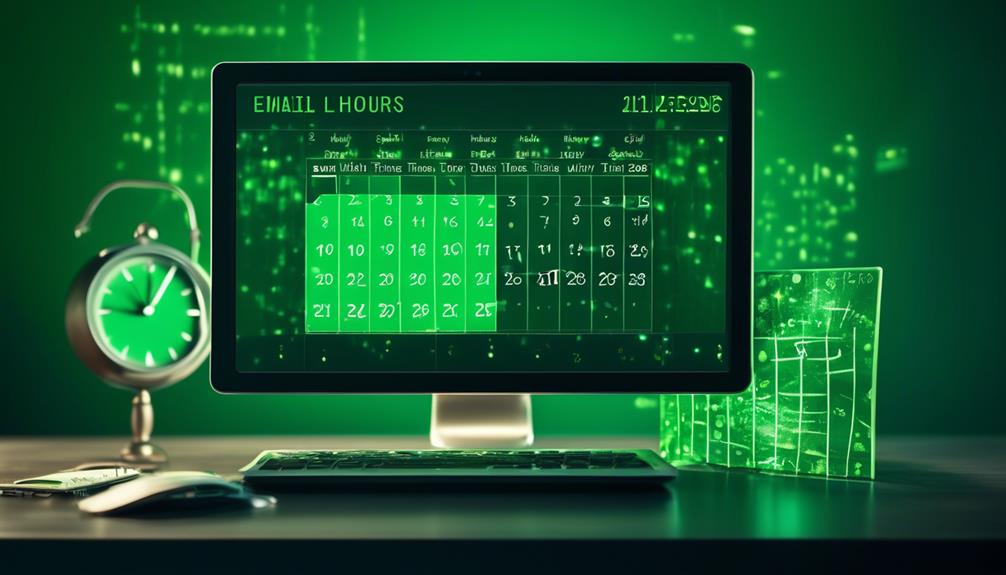In the vast landscape of email communication, navigating working hours can be akin to setting up signposts along a winding road. Clearly defining our availability within our email correspondence is crucial for establishing boundaries and managing expectations effectively.
As we carefully craft our messages to include our working hours, we pave the way for smoother interactions and enhanced productivity. But how exactly can we ensure that our working hours are conveyed in a professional and clear manner, optimizing our communication flow and fostering a harmonious work environment?
Key Takeaways
- Clearly communicate working hours in email signature.
- Customize email signature to emphasize boundaries.
- Prevent misunderstandings and ensure awareness of availability.
- Establish boundaries between professional and personal life.
Importance of Clear Working Hours
Establishing clear working hours is essential for fostering productivity and maintaining a healthy work-life balance. By defining set work hours, individuals can effectively structure their day, prioritize tasks, and allocate time for personal activities. This clarity not only enhances efficiency but also reduces the risk of burnout by creating boundaries between work responsibilities and personal life.
Having a clear schedule enables employees to communicate their availability to colleagues and clients, ensuring that expectations regarding responses and availability are managed effectively. This transparency promotes mutual respect in the workplace, as others can understand and adhere to designated work hours. Employers who encourage a flexible work schedule while emphasizing the importance of clear working hours demonstrate a commitment to promoting work-life balance.
Individuals can reflect their established work hours in their email signature, allowing recipients to recognize their availability. Moreover, when individuals are unavailable during non-work hours, setting an out-of-office message ensures that senders are informed and aware of when to expect a response.
Structuring Working Hours Professionally

Having a clear schedule enables us to professionally structure our working hours, ensuring efficient communication and productivity.
- Flexibility is Key: Recognize the importance of flexibility in work arrangements, allowing for adjustments during outside traditional working hours. Embrace the benefits of Hybrid Work models that promote work-life balance.
- Utilize Email Signatures: Include your working hours in email signatures to establish clear expectations for communication. Customize signatures to reflect your flexible work schedule while demonstrating respect for others' time boundaries.
- Maintain a Professional Tone: When addressing conflicts related to email timing, promote open communication channels. Seek collaborative solutions that consider individual preferences while upholding a professional and respectful demeanor.
Best Practices for Email Communication
In modern professional settings, maintaining effective email communication practices is essential for fostering productivity and collaboration among team members. When it comes to email communication, it is crucial to adhere to best practices to ensure professionalism and respect for others' time and boundaries. Here are some key strategies to enhance email communication:
| Best Practices for Email Communication | Examples | Benefits |
|---|---|---|
| Respect flexible work arrangements | Allowing team members to set their working hours | Improved work-life balance |
| Use email templates | Pre-designed formats for common emails | Time-saving and consistent messaging |
| Consider Time Zones | Being mindful of recipients' time differences | Avoiding delays in communication |
| Balance work and immediate response | Prioritizing urgent messages while respecting others' time | Efficient workflow and reduced stress |
| Value and respect flexible response times | Acknowledging varying work schedules and response expectations | Building a harmonious work environment |
Setting Expectations With Working Hours

Moving from discussing best practices for email communication, we shift our focus to the importance of setting clear expectations with working hours in professional email correspondence.
- Clearly communicate your working hours and expected response time in your email signature. This helps establish boundaries and lets others know when they can anticipate a reply from you.
- Customize your email signature to include a message about setting boundaries. By emphasizing your working hours, you can manage expectations and reduce the likelihood of receiving emails outside normal working hours.
- Use your email signature to show respect for others' work boundaries. Acknowledging time zones can remind recipients to be mindful of when they send emails outside normal working hours, helping everyone maintain a healthy work-life balance.
Utilizing Email Signatures for Clarity
Utilize email signatures to clearly communicate your working hours and response expectations, ensuring effective communication and boundary setting in professional correspondence. Including your working hours in your email signature can help manage expectations regarding when you're available to respond to emails. This simple practice can prevent misunderstandings and ensure that recipients are aware of your availability.
By clearly stating your working hours, individuals sending you emails will know when to expect a response, reducing the likelihood of receiving emails outside normal office hours.
In today's diverse work arrangements, such as working remotely or choosing to work flexibly, it's crucial to establish boundaries between professional life and personal time. Including your working hours in your email signature can help set these boundaries and prevent others from feeling obligated to respond outside normal business hours.
Frequently Asked Questions
How Do You Indicate Working Hours in an Email?
We indicate working hours in an email by clearly stating them in our email signature. This helps set expectations and boundaries. It's important to be transparent and respectful in our communication.
How Do You Write a Work Schedule in an Email?
We write a work schedule in an email by clearly outlining our availability, start and end times, any variations in our schedule like half-days or flexible hours, days off, and the time zone we operate in if relevant.
Providing a consistent format, such as 'Monday-Friday, 9am-5pm,' ensures clarity for recipients. This helps everyone involved understand when we're accessible and sets clear expectations for communication and collaboration.
Should You Put Working Hours in Email Signature?
Yes, we should put working hours in our email signature. It helps set clear boundaries and manage expectations. Specifying our availability protects our time and aids in prioritizing tasks effectively.
It fosters mutual respect and understanding with colleagues and clients. By including our working hours, we create a professional environment that values time management and work-life balance.
It's a simple yet effective way to enhance communication and productivity within the workplace.
How Do You Write Working Days in an Email Signature?
We tackle the question of writing working days in an email signature as a team, ensuring clarity and professionalism. Our approach involves clearly stating the working days in a consistent format, for instance, 'Monday-Friday, 9am-5pm'.
We also consider time zone information for global communication. Our goal is to make these details easily visible without being buried in lengthy signatures.
Regular updates are crucial for accuracy.
Can I Use the Same Format for Clear Working Hours in Update Emails?
When writing clear update emails, make sure to consistently use the same format for presenting working hours. This will help recipients quickly locate and understand the schedule, improving overall communication efficiency within the team. Consistency is key when conveying important information in the workplace.
Conclusion
Just as a lighthouse guides ships safely through the stormy seas, clearly stating your working hours in emails acts as a beacon of guidance for efficient communication.
By setting boundaries and expectations, you pave the way for smoother sailing in the vast ocean of work responsibilities.
Let your working hours shine brightly in your email signature, illuminating the path to productivity and balance.










